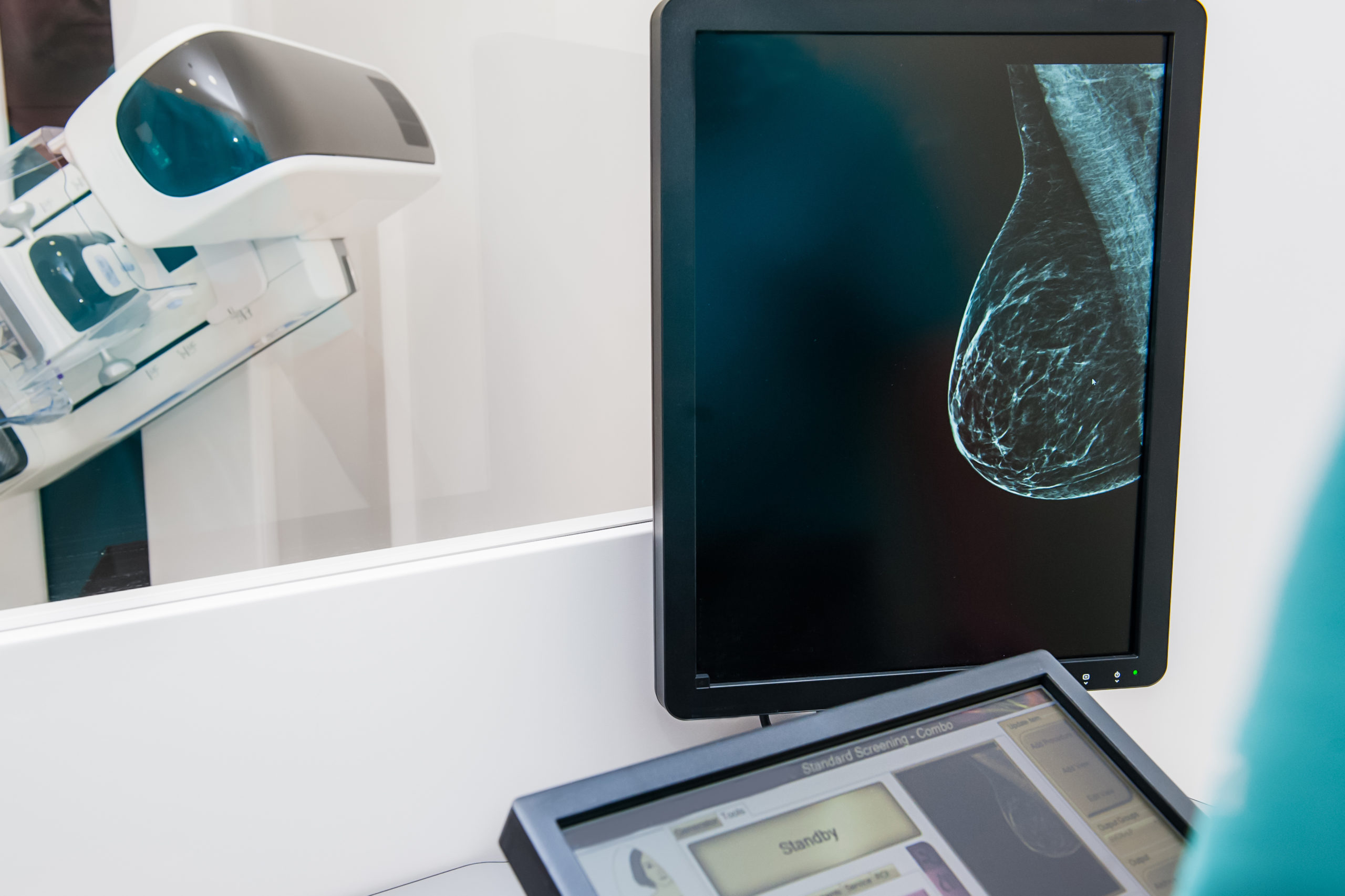
When the COVID-19 pandemic hit the US in March 2020, many non-emergent medical tests and procedures were put on hold. The CDC reported that mammograms offered through the National Breast and Cervical Cancer Early Detection Program were down by 87% during April 2020, compared to previous years.(1) This led to concern among the medical community that extended screening delays would result in later stage cancer diagnoses and poorer health outcomes.
When the COVID vaccines were introduced, we learned that they could cause a side effectA secondary and undesired result of treatment that can be painful, unpleasant or potentially harmful. called axillaryRelated to the armpit. lymphadenopathy, or enlarged lymph nodesSmall, bean-shaped collections of immune tissue that filter out cell fluid and bacteria that may be circulating in the body. They help fight infections and play a role in fighting cancer. in the armpit, on the side where the vaccine was administered. This harmless change in the nodes, that mimics a sign of breast cancer, was being detected through mammographic screens. In early 2021, recommendations from The Society of Breast Imaging may have further delayed screenings when they suggested that women wait 4-6 weeks after vaccination to schedule their annual mammogram to ensure no false positives, while other medical professionals advised an even longer delay, as much as three full months after your final vaccination.
We are now learning that there is no need to delay your mammogram after a COVID vaccine. A recent study published in Radiology that followed 1,217 women with detected axillary lymphadenopathy, determined that these nodes can remain swollen for up to 10 months. It was concluded that short-term follow up is not necessary for all patients with post-vaccine lymphadenopathy. Instead researchers emphasized the importance for clinicians to evaluate the presence of these swollen nodes based on the patient’s risk factors while being especially vigilant in those patients with “concurrent suspicious mammographic findings” in the breast on the same side of the body.
Our lifesaving message has always highlighted the importance early detection of breast cancer has in saving lives. We join in the effort to prompt the public to return to screening and schedule their mammogramsA low dose x-ray picture of the breast that allows a doctor to view glandular tissue and determine the presence of cancer. that may have been delayed because of the pandemic.
Sources
- Sharp Declines in Breast and Cervical Cancer Screening- https://www.cdc.gov/media/releases/2021/p0630-cancer-screenings.html